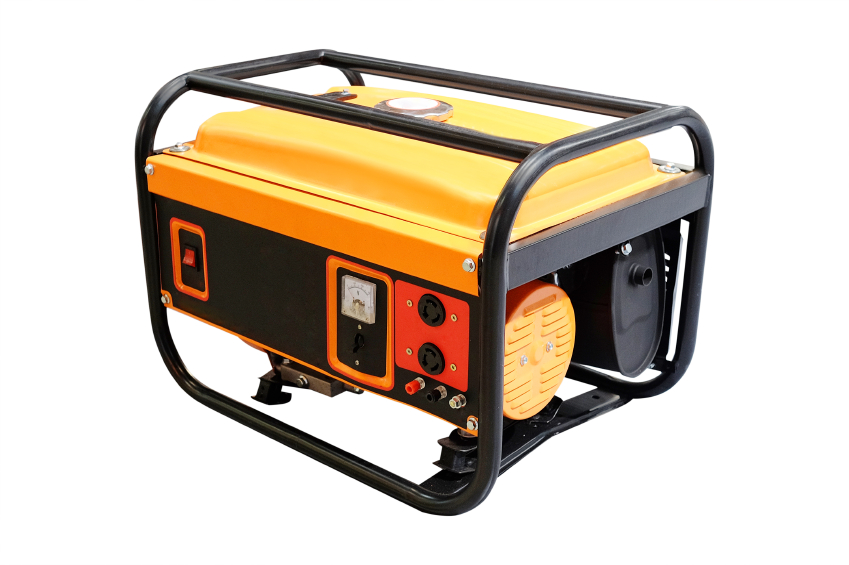Have you ever lost power and needed an emergency or backup generator to continue operations? Do you have an emergency generator onsite or do you have a plan to find one when a situation arises? Today we will discuss some operation and maintenance (O&M) tips for on-site emergency generators and some safety tips for portable generators that are generally used in disaster situations. Tomorrow we will look at the pros and cons purchasing or renting an emergency generator.
 |
A Dozen O&M Tips
If you use a backup or emergency generator at your facility, it is critical that it operate properly when you need it. In order to help guarantee its reliability, here are some O&M tips to keep your emergency generator in tip-top shape.
Tip 1: Exercise your generator periodically under the actual electrical load required of the unit to keep it ready for use.
Tip 2: Develop a “start and connect” checklist specific to each individual generator and keep it where staff can easily find it.
Tip 3: Do not operate the generator in excess of its rated capacity.
Tip 4: Be sure the generator is properly grounded.
Tip 5: Train all staff on how to operate the generator safely.
Tip 6: Maintain 3 to 4 feet (ft) of clear space on all sides and above a generator for adequate ventilation.
Tip 7: Perform scheduled maintenance as recommended by the generator manufacturer
Tip 8: Incorporate fuel management into the maintenance schedule to ensure availability of clean, reliable fuel.
Tip 9: Do not refuel the generator while it is running. Turn it off first and let it cool, especially if the generator uses gasoline.
Tip 10: Keep the generator dry by keeping it elevated and away from possible flooding.
Tip 11: Keep electrical cords off the ground and do not let cords run through low-lying areas or puddles.
Tip 12: Replace any cords with damaged insulation.
EPA’s Proposed NAAQS Rule for Ground-Level Ozone coming Thursday, August 13, 2015 at 1:30pm EST. Join us on August 13 when our presenter, a skilled environmental attorney, will discuss the details of EPA’s proposed rule! Click here to register for this webinar today!
Safety by the Dozen: Tips for Portable Emergency Generators
Tip 1: Wear hearing protection if you have to work close to a generator.
Tip 2: Inspect portable generators for damage or loose fuel lines that may have occurred during transportation and/or handling.
Tip 3: Keep the generator dry.
Tip 4: Maintain and operate the generator in accordance with the manufacturer’s use and safety instructions.
Tip 5: Never attach a generator directly to the electrical system of a structure (home, office or trailer) unless the generator has a properly installed transfer switch, because this creates a risk of electrocution for utility workers.
Tip 6: Always plug electrical appliances directly into the generator using the manufacturer’s supplied cords. Use undamaged heavy-duty extension cords that are grounded (three-pronged).
Tip 7: Use ground-fault circuit interrupters (GFCIs) as per the manufacturer’s instructions.
Tip 8: Before refueling, shut down the generator.
Tip 9: Never store fuel indoors.
Note. Many people have died from carbon monoxide (CO) poisoning because their generator was not adequately ventilated. The final three safety tips relate to preventing just that.
Tip 10: Never use a generator indoors.
Tip 11: Never place a generator outdoors near doors, windows, or vents. Keep generators at least 10 ft away and downwind from inhabited, enclosed areas to prevent the buildup of carbon monoxide fumes.
Tip 12: If you or others show symptoms of CO poisoning—dizziness, headaches, nausea, tiredness—get to fresh air immediately and seek medical attention.
EPA’s Proposed NAAQS Rule for Ground-Level Ozone: What It Means and How to Prepare coming Thursday, August 13, 2015. Register now to learn what to do now to prepare for the EPA’s proposed NAAQS rule for ground-level ozone.
On a related note for stationary generators. Under the National Emissions Standards for Hazardous Air Pollutants for Reciprocating Internal Combustion Engines found at 40 CFR 63, Part ZZZZ (the RICE NESHAP) includes a provision that allowsbackup generators to operate exempt from emissions controls for “emergency demand response” to protect the electric grid from failure or blackouts for up to 100 hours each year, in addition to actual emergency situations and maintenance. The U.S. Court of Appeals for the D.C. Circuit recently vacated the exemption and told the EPA to take another look at it because the Agency failed to respond to comments suggesting that the 100-hour limit was based on faulty evidence. The RICE NESHAP applies to engines at both major and area sources of hazardous air pollutants.
